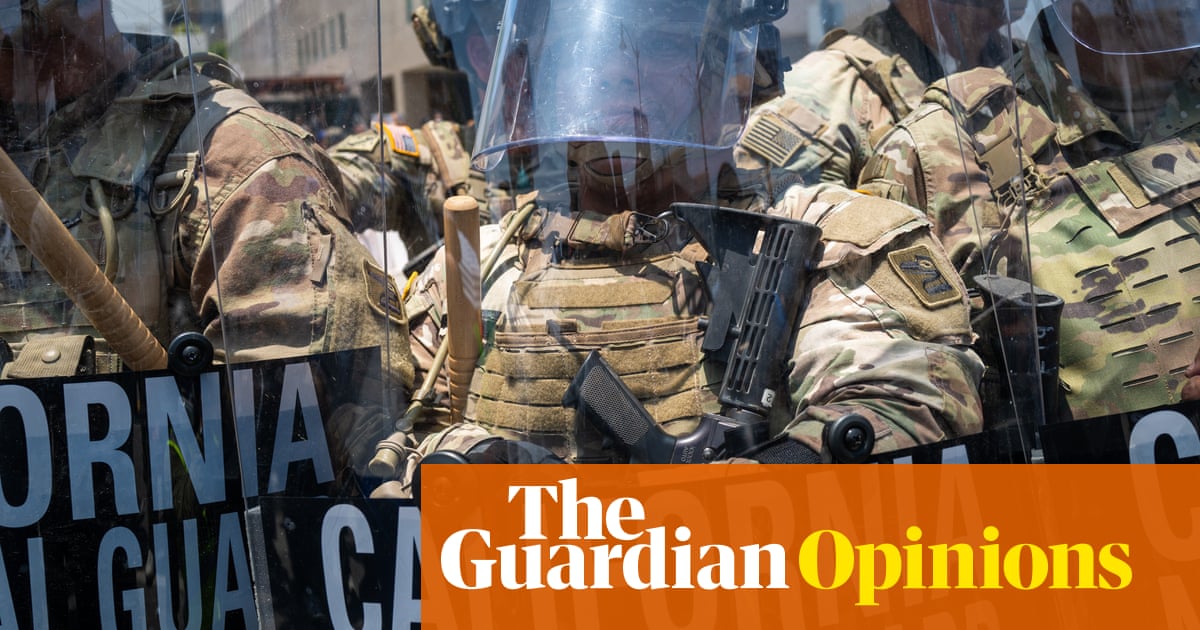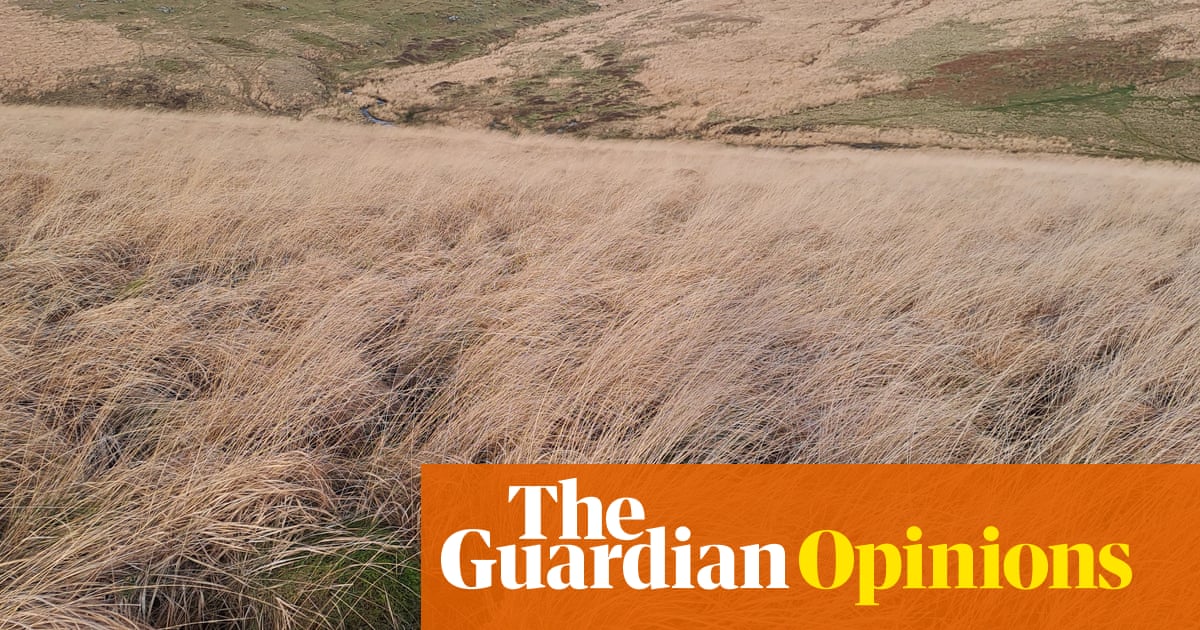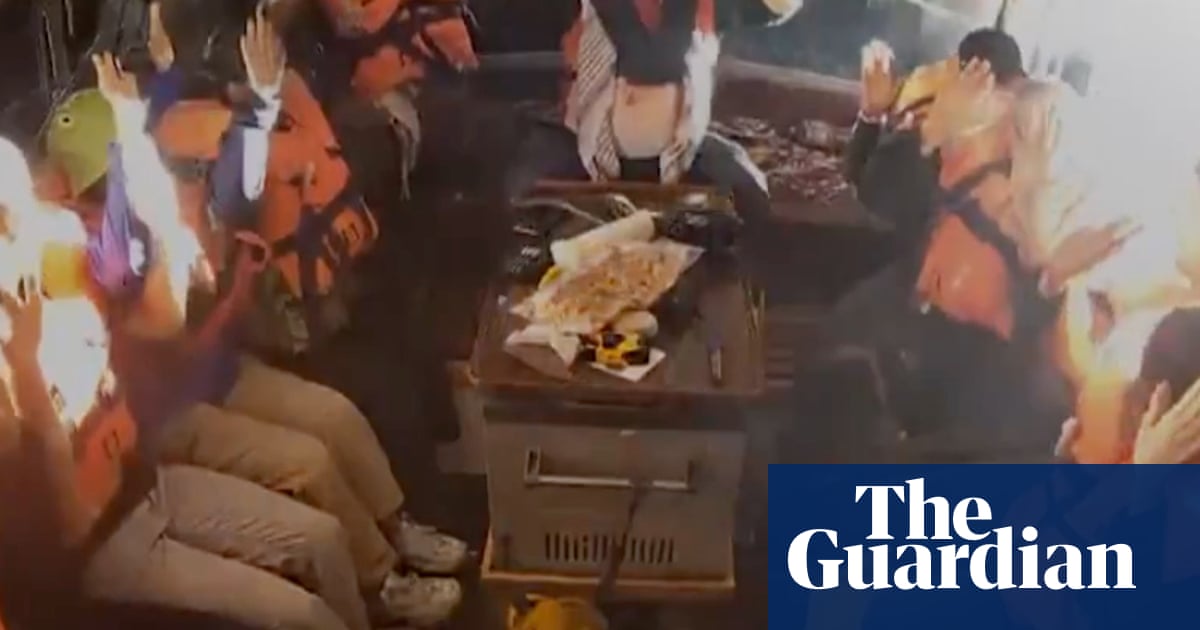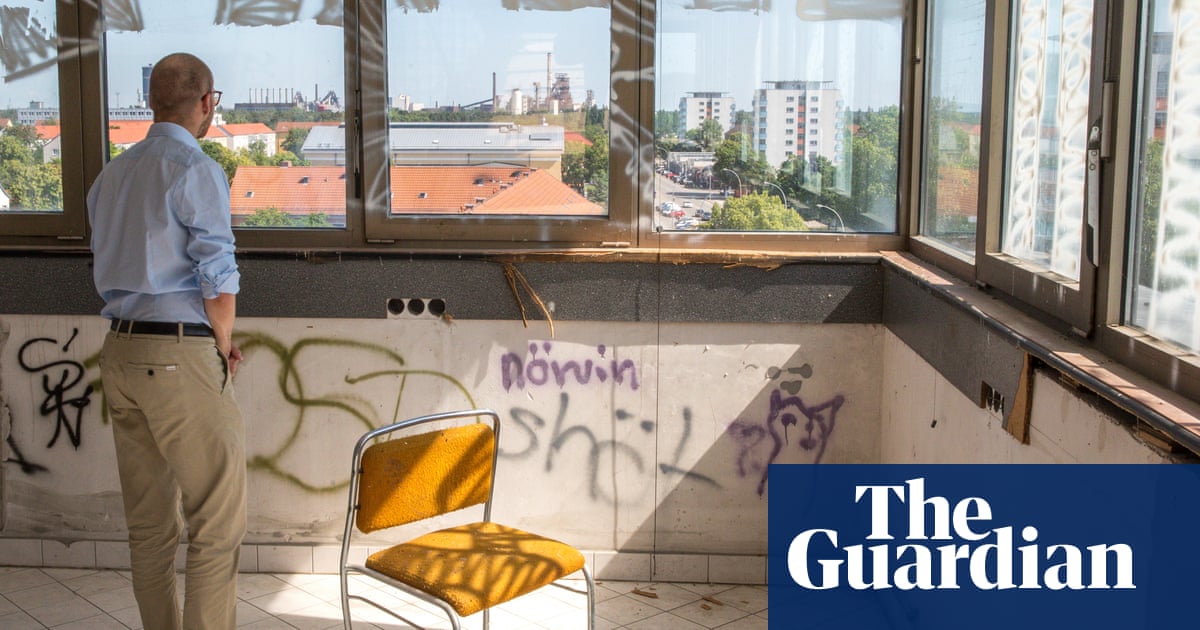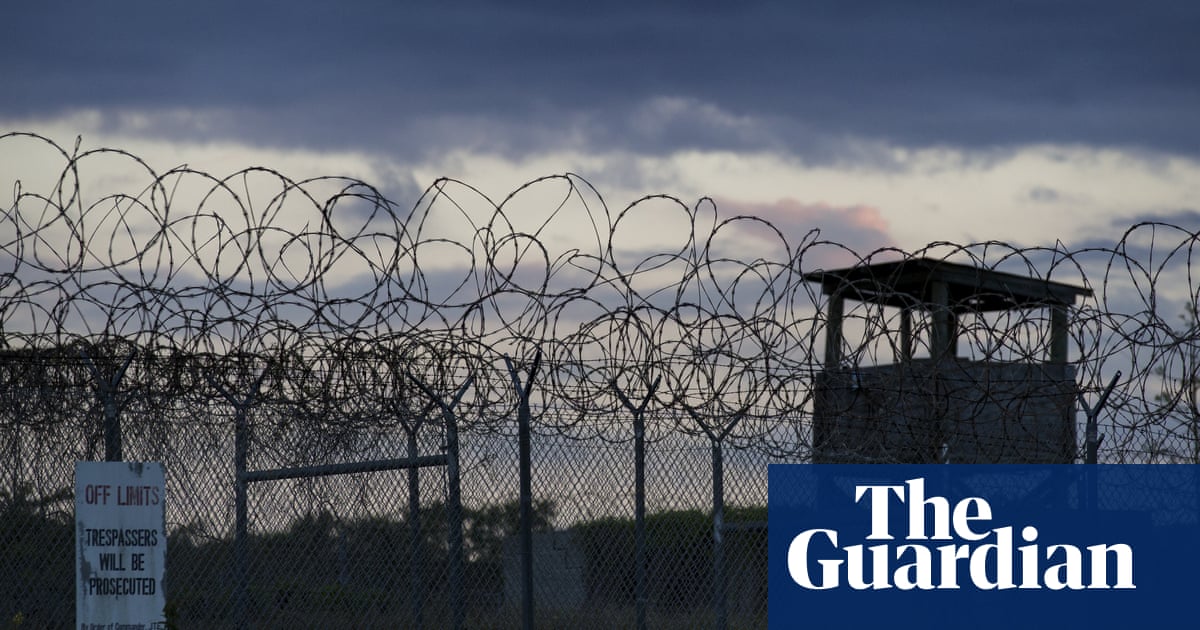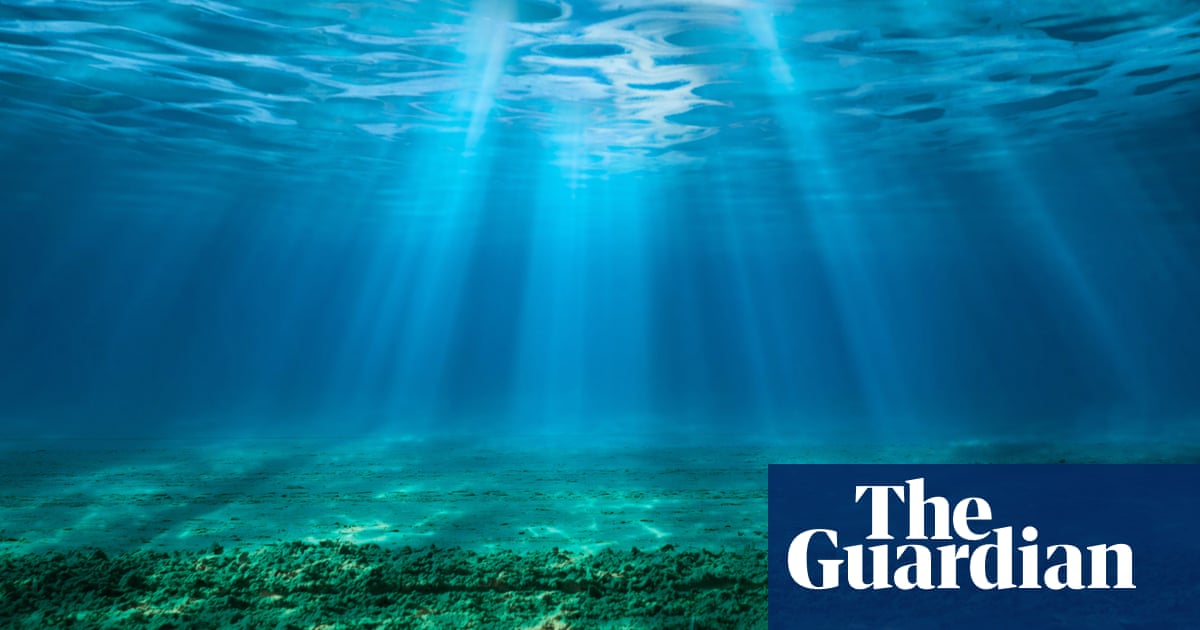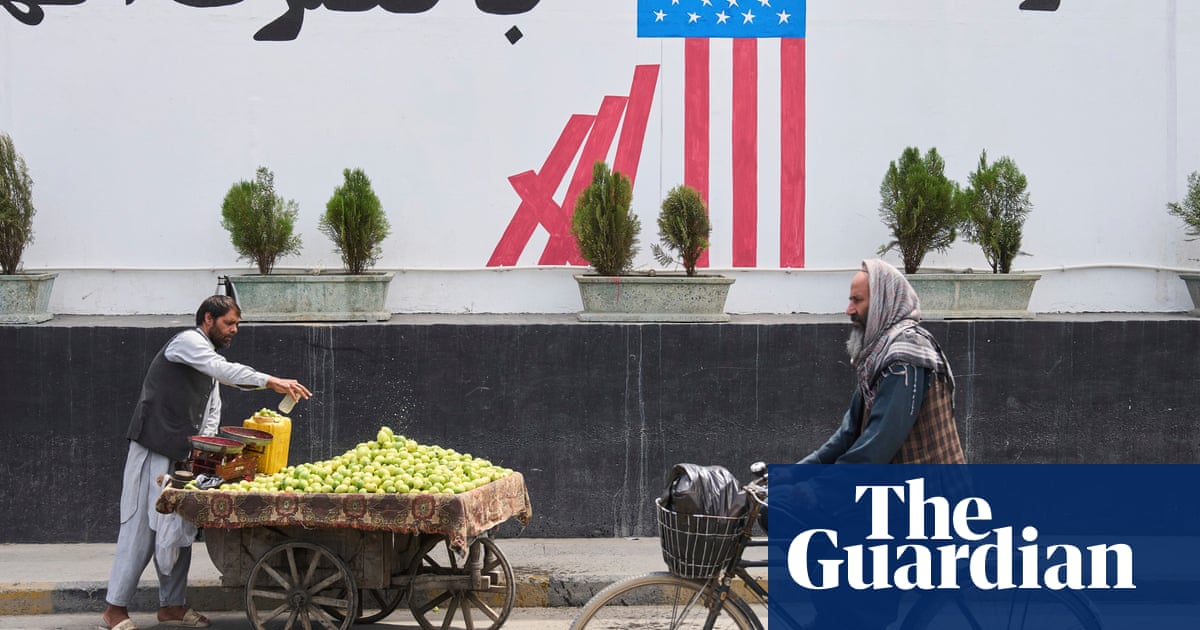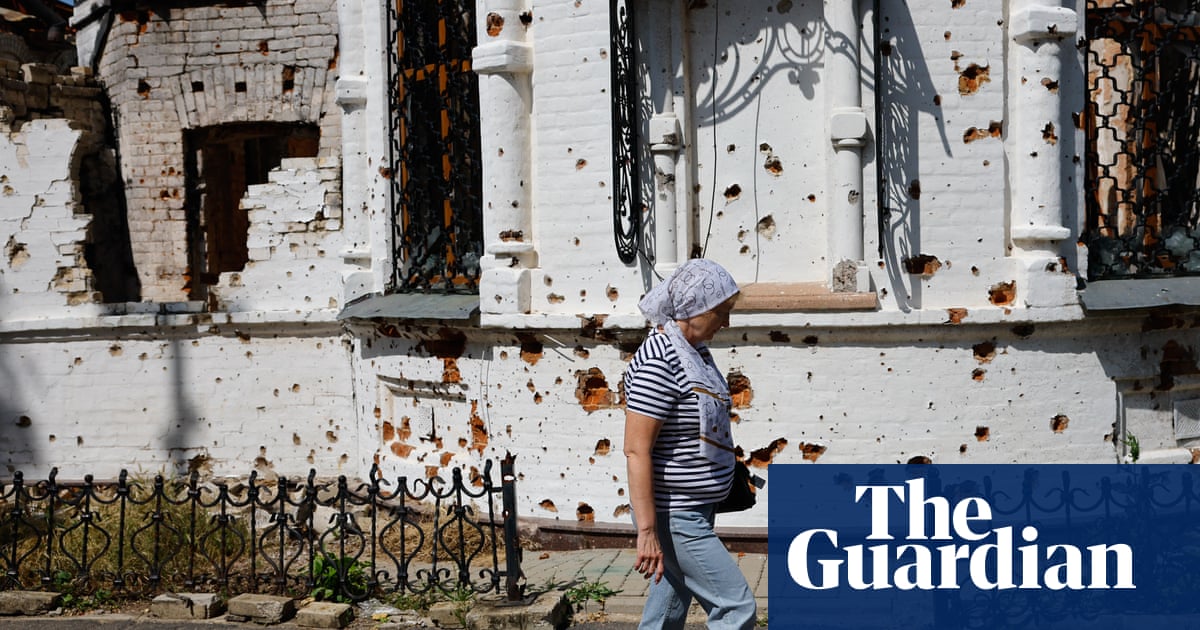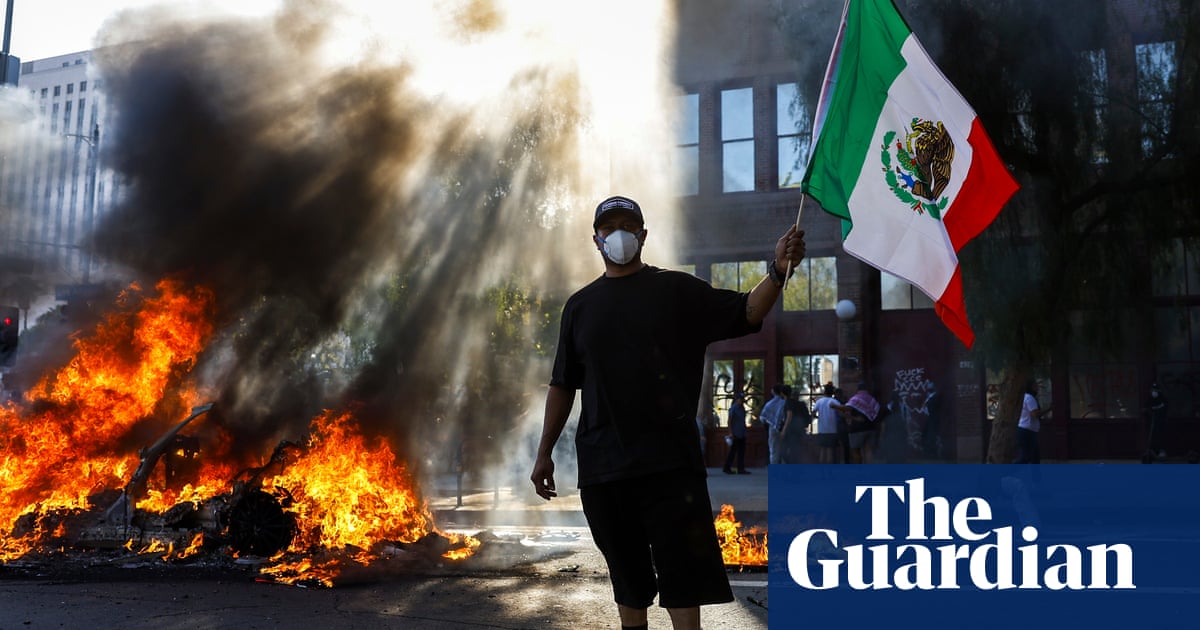Drawing in the snow with his finger, Mykola Hrechukha sketched out how Ukraine’s new lithium mine might look. It would have a deep central shaft, with a series of side tunnels, he said. “The lithium is good everywhere. The biggest concentration is at a depth of 200-500 metres,” he said. “We should be able to extract 4,300 tonnes a day. The potential is terrific.”
For now, though, there is little sign of activity. The deposit is buried under a large sloping field, used in communist times to grow beetroot and wheat. The mine’s proposed entrance is in an abandoned former-Soviet village, Liodiane, today a scruffy grove of acacia and maple trees. The only inhabitant is a security guard, who lives on the 150-hectare site in an ancient Gaz-53 truck. Wild boar and even a wolf sometimes wander past.
The lithium deposit is located in central Ukraine’s Kirovohrad region, about 350km (217 miles) south of the capital, Kyiv. Solar-powered scientific instruments measure air temperature and seismic activity. In 2017 a Ukrainian company, UkrLithiumMining, bought a government licence to exploit the site for 20 years. It cost $5m. Geological surveys confirm that the ore, known as petalite, can be used to produce batteries for electric vehicles and mobile phones.
According to the US president, Donald Trump, these underground reserves should now belong to America. Last week, the new US treasury secretary, Scott Bessent, visited Kyiv. He presented Ukraine’s president, Volodymyr Zelenskyy, with a surprise claim to half of Ukraine’s mineral wealth, as well as to its oil, gas, and infrastructure such as ports. The $500bn bill was “payback” for previous US military assistance to Ukraine, the White House explained.
Zelenskyy refused to sign the agreement. He made it clear Washington had to give security guarantees before any deal could be reached on the country’s vast natural resources, about 5% of global mineral reserves. He also pointed out that the US had given $69.2bn in military aid – less than the sum Trump was now demanding – and added that other partners such as the EU, Canada and the UK might be interested in investing, too.
Speaking on Wednesday, shortly before Trump called him “a dictator”, Zelenskyy said he could not “sell Ukraine away”. He was willing to work on “a serious document”, he said, which ensured Russia did not attack Ukraine again.
US and Ukrainian negotiators were seeking to move past the spectacular breakdown in transatlantic relations and to finalise a deal, Bloomberg said on Friday.
Commentators have described Trump’s aggressive ultimatum as “mafia imperialism”, a “colonial agreement”, and reminiscent of what the Europeans did in the 18th century when they carved up Africa.
“It’s as if we lost the war to America. This looks to me like reparations,” Volodymyr Landa, a senior economist at the Centre for Economic Strategy thinktank in Kyiv, said. Ukraine’s overall reserves are worth $14.8tn. They include lithium, titanium and uranium, as well as coal, steel, iron ore, and undersea shale gas. Many deposits had not been developed, Landa said, either because they were not feasible or due to political instability.
Others are in areas occupied by Russia. Ukraine’s lithium deposits – about 500,000 tonnes’ worth – are among the biggest in Europe. One site is in Kruta Balka, near the southern port of Berdiansk, which the Kremlin occupied early in its 2022 invasion. Another is in the Shevchenkivskyi district, on the frontline in the eastern Donetsk oblast. Russian troops recently took control of the area.
The deposit in Liodiane is one of two under Ukrainian control.
According to Landa, Ukraine’s minerals sector has “high risks and high rewards”. There is a long history of foreign investment, he said, with French, Belgian and British engineers developing the country’s coal industry in the 19th century. The city of Donetsk – seized by Russia in 2014 – was originally named Hughesovka, after the Welsh businessman John Hughes, who founded a steel plant and several coalmines in the region.
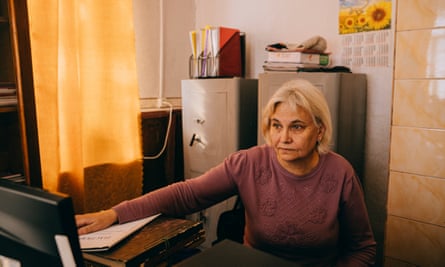
Residents living near Liodiane said they supported the construction of a new lithium mine. They were not, however, ready to give the profits to Trump. “This idea is too much,” Tetiana Slyvenko, a local administrator, said. “He wants to take resources from a country in a time of war. How are we supposed to live? We have children. It’s as if the US seeks to deprive us of our economic potential. It would finish us off, the same as America did with Red Indians [Native Americans].”
Slyvenko said Russian rockets flew regularly over her village of Kopanky, in the Malovyskiy district, on their way to targets in western Ukraine. In December, she filmed three streaking overhead from her garden. “I said a few bad words. The rockets were flying very low. We are tired. Our emotions are understandably strong,” she said. Two weeks ago, a shaheed missile crashed in a nearby field, not far from the shallow valley where the lithium is buried.
About 300 people live in the neighbouring villages of Kopanky and Haiivka, most of them elderly. Breaking off from ice fishing on Kopanky’s picturesque frozen lake, 72-year-old Stanislav Ryabchenko said he hoped the mine would bring young people back to the community and create jobs. “What Trump suggests is blackmail. He knows we can’t push the Russians out on our own. We need joint production, not a takeover,” he said, showing off two carp.
Denys Alyoshin, UkrLithiumMining’s chief strategy officer, said his company was looking for foreign investment. It would cost $350m to build a new and modern mine, in accordance with EU environmental standards, he said. He acknowledged that construction could begin only once Russia’s war against Ukraine was over. Ideally, he said, Ukraine would process the ore in country into a concentrate. This would then be refined into battery-grade lithium carbonate.
Trump has said he wants a share of “rare earths”, a class of 17 minerals. In fact, Ukraine has few of these. The US president appears to have confused them with rare metals and critical materials, such as lithium and graphite. Alyoshin said there was a further misconception that quick profits could be made. “People think you put a shovel in the ground and dig up money. We have been working on this project for five or six years. With investment we can begin production in 2028,” he said.
Back in Liodiane, the only sound was birdsong. In the 1960s and 70s the village was home to agricultural labourers working in a kolkhoz, a Soviet collective farm. There were two streets, a cluster of clay-and-straw houses and a community centre known as the “Club”. The last inhabitant died in 1983. In the pre-electric vehicle era, lithium was used in the ceramic and glass industries. Soviet geologists discovered the seam half a century ago, but decided it was not worth exploiting.
Hrechukha, the mining company’s local representative, said there was a ready available workforce, after a uranium mine 20km down the road in the town of Smolino was decommissioned last year. His firm was keen to cooperate with outside partners, he stressed, but only on the basis of international law. He said he respected the world’s richest man, Elon Musk, whose Tesla car business required lithium. “We are interested in a long-term client,” he said.
In the meantime, the US was far away. “I don’t think US soldiers are going to be coming here anytime soon,” Hrechukha predicted, surveying the white field. He added: “It’s more likely aliens from another planet will turn up.”

 3 months ago
58
3 months ago
58

